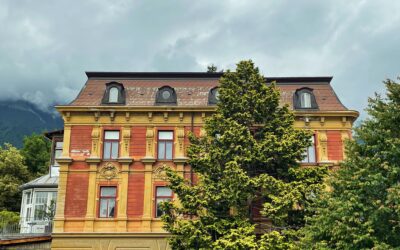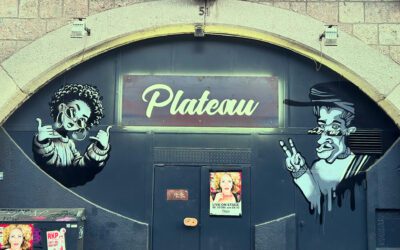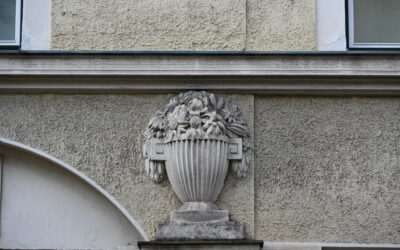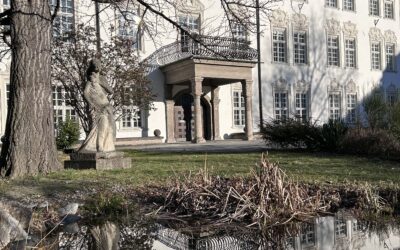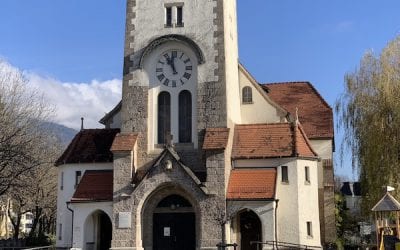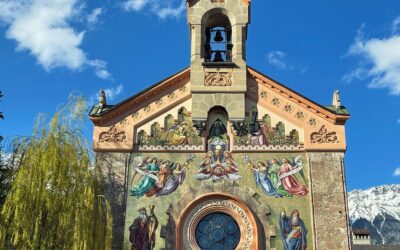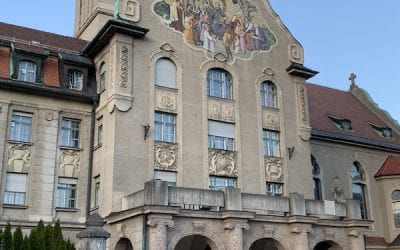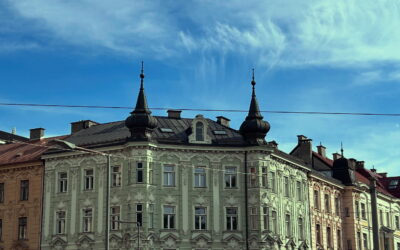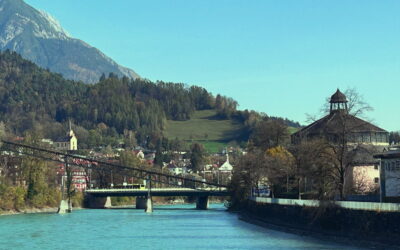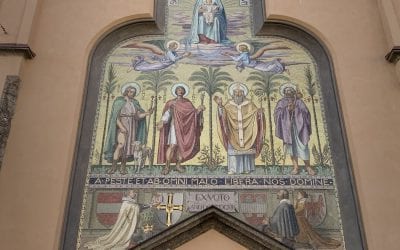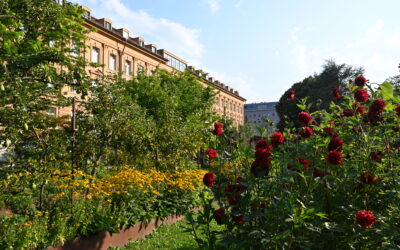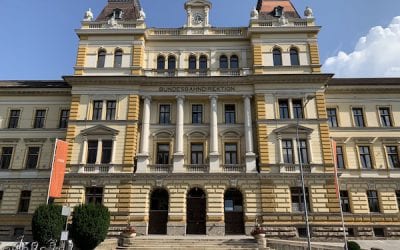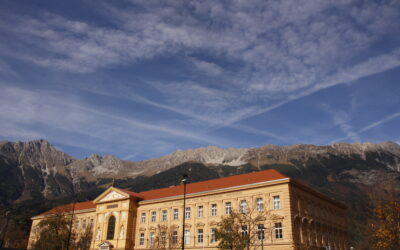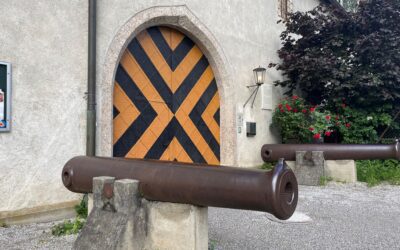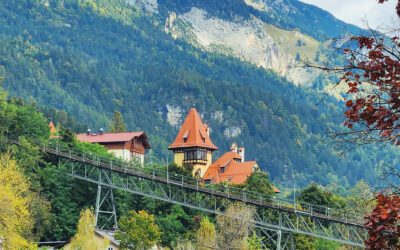Saggen & Kohlstatt
Interesting facts about the Saggen and the Kohlstatt
In the second half of the 19th century, Innsbruck expanded in all directions. If you compare maps from 1880 with maps from 1930, you can see the growth of the district, which is still bordered by a bend in the River Inn, the River Sill and the railway viaduct arches. The area was partially incorporated into the city as early as 1453. In 1495, Maximilian I acquired the part that is still known today as Kohlstatt in order to boost the armaments industry. An early industrial area developed around the armoury. Kohlstatt and Dreiheiligen between the city of Innsbruck and rural Pradl formed the Workers' neighbourhood der ersten Industrialisierung im 16. Jahrhundert. Der Name Kohlstatt rührt von der Herstellung der Kohle, mit der die Öfen des Zeughauses betrieben wurden. Anders als bäuerliche Schichten oder die in Gilden organisierten Handwerker der Stadt, handelte es sich um eine frühe Form der Arbeiterschaft und deren Familien. Nicht nur einfache Arbeiter, auch Techniker und Gießer waren hier beschäftigt, hochqualifizierte und begehrte Schlüsselarbeitskräfte. Der Sillkanal versorgte die Industriebetriebe der Kohlstaat mit Wasser, über die gepflasterte Silbergasse war der Fertigungsort mit der Stadt verbunden. Neben den stinkenden und schmutzigen Betrieben war hier am Stadtrand auch das Infirmary and hospital angesiedelt. Später, als sich unter Maria Theresia das stehende Heer etablierte, benötigte man Platz für militärische Zwecke. Die freie Fläche nach Norden hin und die ehemaligen, mittlerweile wenig produktiven Werkstätten in Dreiheiligen waren perfekt dafür geeignet. Im 18. Jahrhundert wurde aus einem Adelspalais neben dem Kapuzinerkloster die Klosterkaserne samt Exerzierplatz. Heute befinden sich hier das Fennerareal und die Polizeidirektion.
At the same time, the south-west of today's Saggen presented a different picture. Starting in the reign of Ferdinand II, pleasure houses, gardens and menageries, including the Löwenhaus, were built around the meadows to the east of the . The court gardens began in the fishing and hunting grounds of the Tyrolean sovereigns. Meadows and fields stretched to the north of it. The area got its name from its location. Squeezed between the Inn and Sill rivers, the Landspitz without an exit reminded people of a sack. In 1581, Ferdinand II had a bridge built to connect Hall and Innsbruck via Mühlau for members of the court and guests of state. In 1643, the Mühlau Bridge was opened to commercial traffic as a toll road that could be used by the public. The one-way sack had become a popular entrance, but the name Saggen remained. After the old wooden bridge was repeatedly destroyed by floods, it was decided to build a stable alternative. The chain bridge was built in 1843. Two high gate towers towered clearly into the sky. Between them, chains weighing several tonnes spanned a length of 75 metres. The Chain Bridge was considered the most expensive of its kind in the entire Habsburg Empire and became an attraction and popular postcard motif.
Between 1830 and 1870, the city's population rose from 12,000 to 17,000. Students, soldiers and workers from all parts of the empire as well as newcomers in search of work from the surrounding area began to make Innsbruck grow. Pradl and Wilten, still independent communities at the time, were caught up in industrialisation. Farmers and their livestock, which were driven along the roads through these villages, mingled with the newly arrived labour force. Saggen, on the other hand, remained almost completely undeveloped until the 1880s, when it became a neighbourhood for upscale, middle-class living and entertainment. In the first ten years or so, it was mainly villas that were built before the city council decided to only build blocks of flats east of Claudiastrasse. On 24 February 1900, the Innsbrucker Nachrichten:
„In the eastern urban expansion area at Saggen, an extraordinarily lively building activity seems to be developing this year. Apart from the fact that 9 buildings are under construction in the section for closed construction and four villas in the cottage and will be completed this year, the further construction of 6 houses, including two extensive corner apartment buildings at Claudiaplatz and in Adolf-Pichlerstraße, is in prospect.“
Neben der Besiedelung entstanden zwischen der Kettenbrücke und den Bahnviadukten Innsbrucks Freizeiteinrichtungen. Das Panoramagebäude, das Riesenrundgemälde und die erste Sportanlage der Stadt mit Radrennbahn, Boxring und Tennisplätzen waren ebenso Teil des Saggen wie die kurz nach 1900 eröffnete Hungerburgbahn. Diese Infrastruktur war nicht mehr von der Aristokratie ins Leben gerufen worden und ihr damit exklusiv vorbehalten wie die Gärten, Paläste und Jagdreviere vergangener Zeiten. Auch die Paläste des Saggen, das Waisenhaus und das Greisenasyl im klassizistischen Stil wurden vom wohlhabenden Privatier Johann von Sieberer gestiftet, nicht von der Kirche oder dem Adel. Die Straßen im Saggen wurden vom größtenteils deutschnationalen, bildungsbürgerlichen Publikum getauft. Haydn, Bruckner, Schubert, Stifter, Goethe, Schiller, Wagner und Mozart standen Pate für die neuen Straßenzüge. In den Kulturschaffenden, nach denen die Straßen benannt wurden, sollten sich die gemeinsame Geschichte, Kultur und nationale Einheit des Deutschen Reichs und des Kaiserreichs Österreich sowie die Machtverhältnisse im Gemeinderat unter Bürgermeister Greil widerspiegeln.
Heute gilt der Saggen in der Wahrnehmung der meisten Innsbrucker vor allem als altehrwürdiges Nobelviertel. Das betrifft nicht nur das Wohnen, auch beim Thema Krankenpflege hebt sich das Angebot des Stadtteils vom Rest der Stadt ab. Mit dem Sanatorium der Barmherzigen Schwestern, einem seit 1839 in Innsbruck ansässigen Orden, entstand in der Zweiten Hälfte des 19. neben der Kettenbrücke ein Krankenhaus. Das Kloster des Ordens, der sich bis heute der Kranken- und Altenpflege verschreibt, befindet sich im 1884 fertiggestellten Gebäude am Rennweg 40. 1847 kaufte man das Grundstück, auf dem sich bis heute das Sanatorium befindet. Anders als die zweckorientierten Gebäude wurde auch dieses Spital ganz dem Charakter des Saggen entsprechend wie ein Palast samt Turm, Kapelle und großem Garten angelegt. Bis heute tummeln sich in dieser Privatklinik die, die es sich leisten können, während die große Masse der Innsbrucker mit der sehr guten Pflege in der Innsbrucker Klinik Vorlieb nehmen muss. Für den nordwestlichen Teil zwischen Hofgarten und Messe, wo mit ganz wenigen Ausnahmen kaum Geschäfte oder Gastwirtschaften zu finden sind, trifft das Image des Relikts aus der Belle Epoque zu. Das ist aber nur ein Gesicht des Viertels. Zählt man Dreiheiligen und den Pradler Saggen hinzu, offenbart sich ein kontrastreiches Grätzl. Anfang des 20. Jahrhunderts entstand am Sillspitz der Schlachthof. Östlich des Bahnviadukts wurde mit dem Slaughterhouse block one of the largest housing estates for workers was built in the 1920s. The eastern section along the viaduct arches of Ing.-Etzel-Straße and the exhibition hall, the so-called Blocksaggen, has developed into a nightlife district over the last few decades. While the former working-class neighbourhood of Wilten is now mainly home to students in shared flats, Saggen has become a district for car mechanics, Barflies und Hipster geworden.
Villensaggen
Falkstrasse / Saggen
Viaduct arches
Ing.-Etzel-Straße
Slaughterhouse block
Erzherzog-Eugen-Straße 25 - 38
Palais Ferrari & Old Garrison Hospital
Weinhartstrasse 2 - 4
Lutheran Church of Jesus Christ
Richard-Wagner-Strasse 2
Monastery of Perpetual Adoration
Karl-Kapferer-Straße 7-11
Collegium Canisianum
Tschurtschenthalerstrasse 7
Claudiaplatz
Claudiaplatz
Panoramagebäude
Rennweg 39
Church of the Holy Trinity
Dreiheiligenstraße 10
Kaiser-Franz-Joseph-Greisenasyl
Ingenieur-Etzel-Straße 59
ÖBB Verwaltungsgebäude
Claudiastrasse 2
Orphanage - Siebererschule
Siebererstraße 7-9
Armoury
Zeughausgasse 1
Hungerburgbahn & Nordkettenbahn
Congress Centre / Rennweg 39
